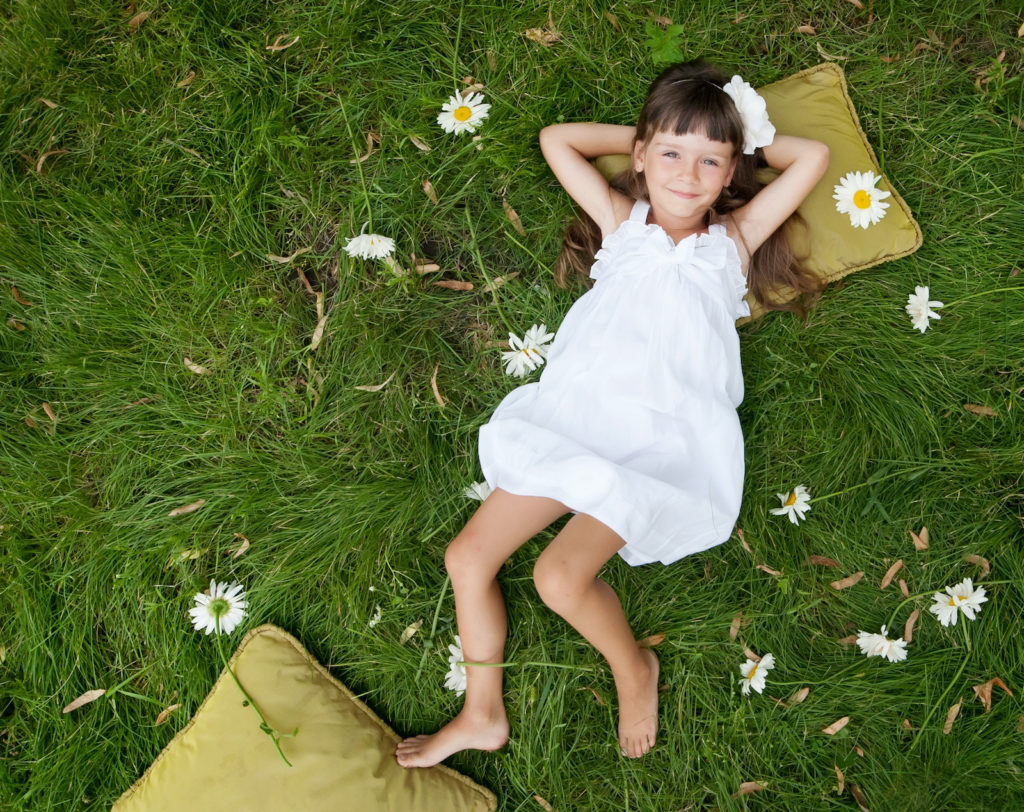How Guided Meditation Can Help Kids Deal with Stress
Nutrition, sleep, and exercise are the main pillars of health. But another important and often neglected component is stress management for kids. Chronic stress, even in children, is considered the root cause of many health problems.
Meditation for kids can help.

There are many stress management techniques that children and their parents can learn and practice together:
- journaling
- mindfulness
- progressive muscle relaxation,
- guided meditation
Other mind-body techniques that can help with anxiety, behavior, and mood disorders in children include biofeedback, massage, and music therapy.
Meditation Helps Kids Handle Anxiety
Meditation for children is the ultimate stress management tool, and it can be taught to very young kids. And meditation won’t just benefit them. Families that meditate together are often more resilient to stress.
Meditation is an exercise for the mind that can change the body’s chemistry (source). In most types of meditations, the mind needs a point of focus. It’s a myth that we can stop our mind from thinking, but we can give it a point of focus, like the breath or a word, so that it goes beyond the thoughts. Meditation is not a religious practice. However, every spiritual tradition in the world has developed some form of meditation, prayer, or chanting to discipline the mind.
In kids, meditation works as a stress management tool by switching off the “fight or flight” response to stress and allowing the body to switch on the relaxation response. When children meditate, they regulate the nervous system and become less reactive to stress.
Meditation changes the chemistry of stress. Instead of making more stress hormones, like cortisol or adrenaline, the body and the brain start to work together harmoniously to make different molecules and neurochemicals that trigger a relaxation response (source).
The Best Types of Meditation for Children
There are different types of meditations for kids: sitting meditations, breathing meditation, mantra meditation, walking meditation, guided meditation and mindfulness meditation.
I recommend parents experiment with different types of meditations until they find one that works for them and their children.
Sitting Meditation
- Find a quiet spot in the house, where you can sit comfortably
- No distractions like pets, phones, iPads, TV, computers
- Sit quietly for few seconds or minutes, breathing normally, with your eyes closed
- Take one, slow deep belly breath through your nose – hold for 4 seconds – breathe out through your nose slowly
- Repeat 3 times
Breathing Meditation
- Start with the “sitting” meditation (see instructions above) and continue to focus your attention on the breath flowing in and out, effortlessly, without trying to change it
- You can repeat “breathing in/breathing out.”
- If you start noticing thoughts or have any feelings in your body or hear sounds around you, gently release them and focus again on your breath
- Try this deep breathing guided meditation if you’d prefer a script to follow
- Start with 5 minutes/day, twice a day, increase slowly to 10-15 minutes, twice a day
Mantra Meditation
- Start with the “sitting” meditation (see instructions above) then start repeating quietly, in your mind, the mantra/words “SO HUM.”
- Repeat the words slowly, gently, effortlessly
- If you start noticing thoughts or have any feelings in your body or hear sounds around you, gently release them and focus again on the mantra “SO HUM.”
- Start with 5 minutes/day, twice a day, increase slowly to 10-15 minutes, twice a day
Walking Meditation
- Focus on your heart center, in the middle of the chest
- Start breathing in and out slowly
- Recall a positive emotion or think of something or someone you love
- Start walking (preferably out in nature) while focusing on your heart center, breathing in and out slowly, while repeating phrases like “I am peace”, “I am happy”, “I am relaxed”, “I am joy”.
- Depending on the age of the child and the location of the walk, an adult may need to accompany
Mindfulness Meditation
• Take a deep breath in and slowly breathe out
• Notice and name silently 3 things that you hear in your environment
• Notice and name silently 3 things that you can see
• Notice and name silently 3 things that you can touch
• Notice and name silently 3 things that you can taste or smell
• Restart your regular activity; repeat as needed, several times throughout the day
Some of the most common benefits experienced during and after meditation are feeling more relaxed, being able to focus easily, being less reactive, better sleep, better relationships, a feeling of peaceful joy and calm, being more productive.
More Stress Relief Techniques for Kids
Anything you can do to help your child get a full night of deep rest will help their body and mind be in its best shape to handle stress. Below are some yoga, mindfulness, somatic, and sleep-focused exercises you can try with kids of almost any age.
The Best Yoga Poses for Kids
Somatic Exercises to Release Tension
Benefits of a Calm Down Corner
Sleep-Focused Guided Meditation Scripts for Kids
Mindfulness Toys for Kids
Yoga Gifts for Kids
Outdoor Mindfulness Activities
